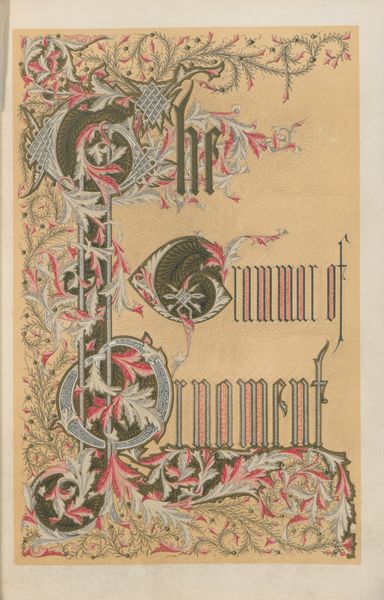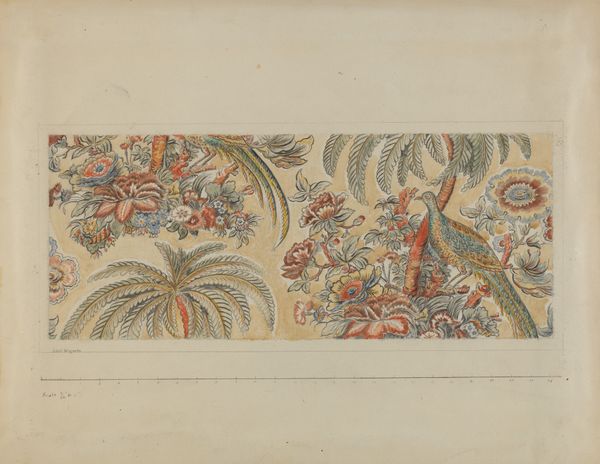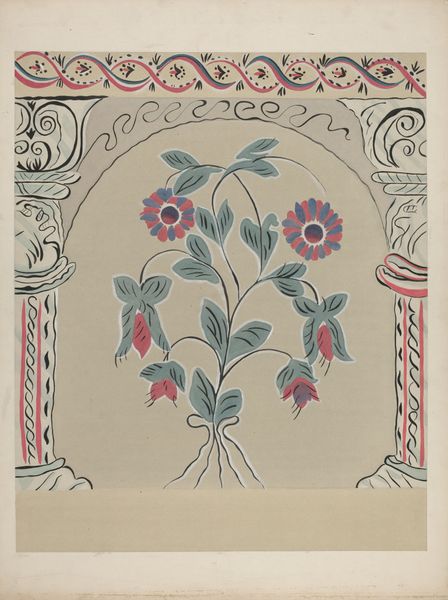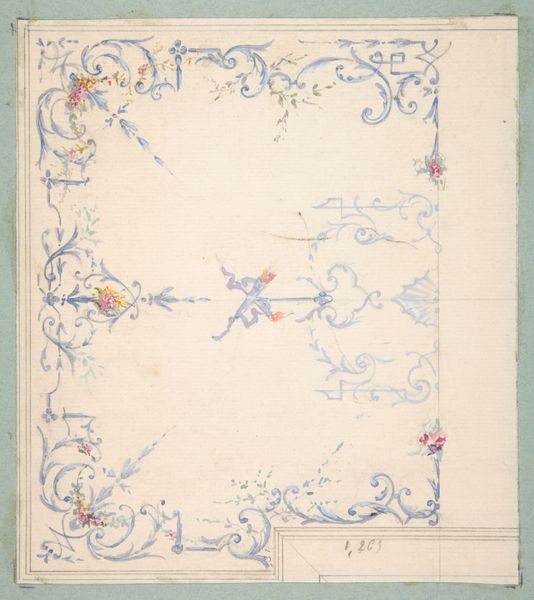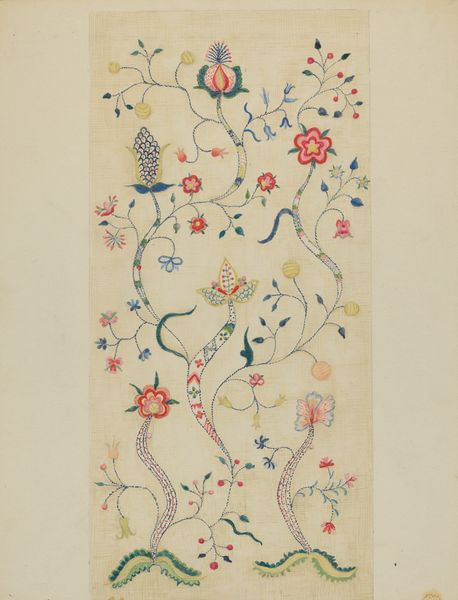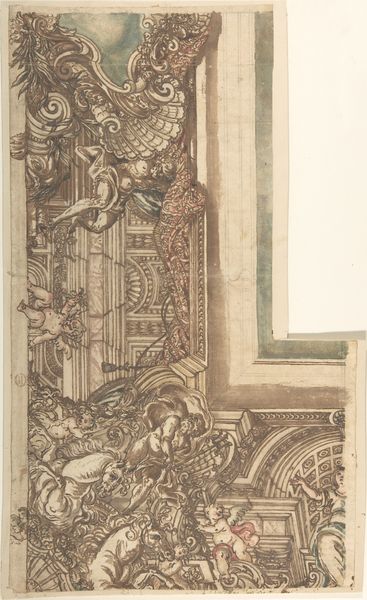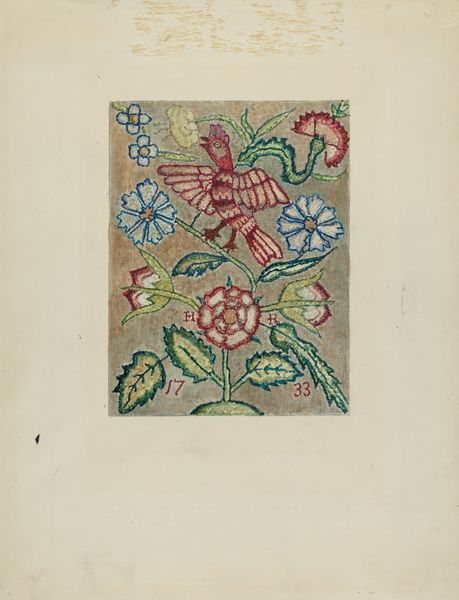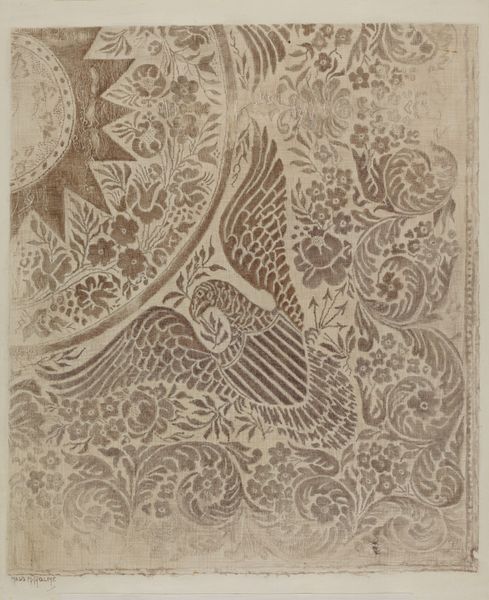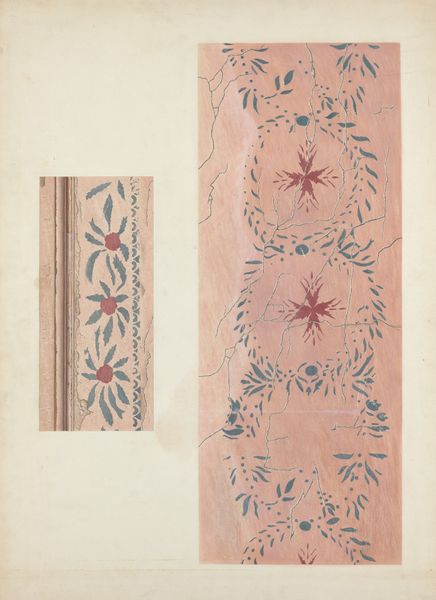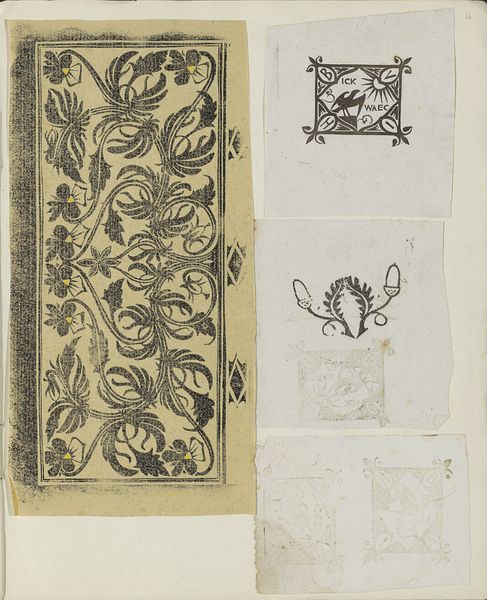
Dimensions: 2 preliminary leaves, 6, [106] pages : 100 plates (some color including frontispiece) ; Height: 22 7/16 in. (57 cm) x Width: 15 3/8 in. (39 cm)
Copyright: Public Domain
Editor: Here we have Owen Jones’ *The Grammar of Ornament*, published in 1856. It’s such an intricately detailed… well, ornament! I'm really struck by the stylized, almost mathematical arrangement of natural forms. What do you see in this piece, especially given its historical context? Curator: This is more than just a decorative flourish; it’s a manifesto. Jones and the Arts and Crafts movement sought to challenge the dehumanizing effects of industrial production by reviving traditional crafts and elevating the status of the artisan. Consider the cultural impact: at a time when mass-produced, often poorly designed, goods were becoming the norm, Jones champions beauty and skill as inherently linked to social well-being. How might the embrace of non-Western decorative traditions within this piece reflect a broader critique of Victorian imperialism? Editor: That’s a really interesting point. The way the design borrows from different cultures does feel like a statement. But isn't there a risk of appropriation if he’s just taking these motifs without fully understanding their original context? Curator: Absolutely. It's crucial to approach Jones' work with a critical eye. While he aimed to promote cross-cultural understanding, the power dynamics of colonialism inevitably shaped his perspective. Think about the role of ornament itself – historically used to signify status and power. How might Jones be subverting or reinforcing those structures? The seemingly 'natural' patterns, too, deserve scrutiny: they are, after all, meticulously constructed and reflective of specific aesthetic ideals. Editor: That's made me think about ornamentation in a whole new way, not just as pretty patterns but as statements about society. Curator: Precisely. This piece urges us to consider how design choices reflect, reinforce, or challenge social norms and power structures.
Comments
No comments
Be the first to comment and join the conversation on the ultimate creative platform.


